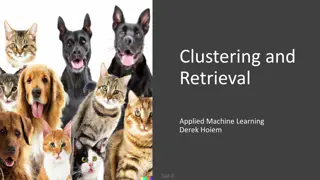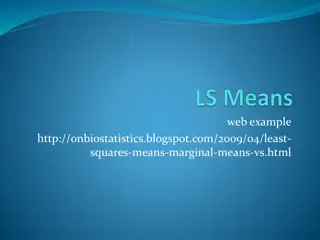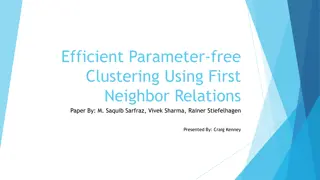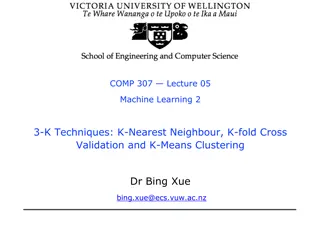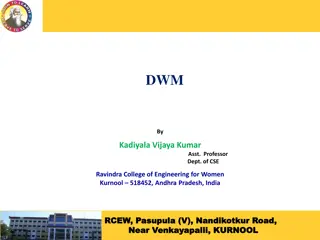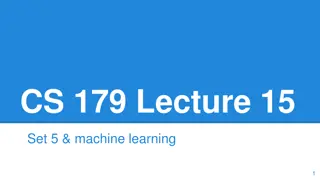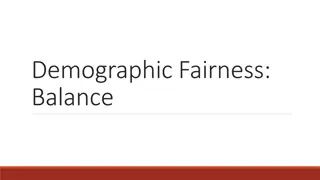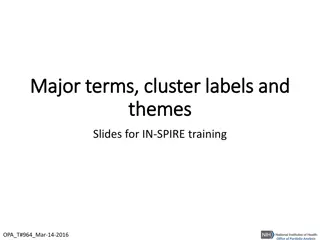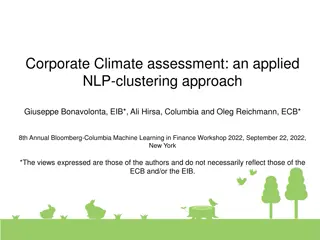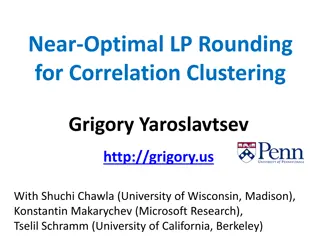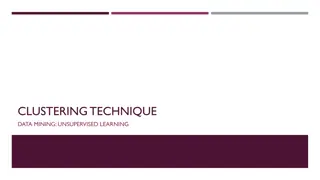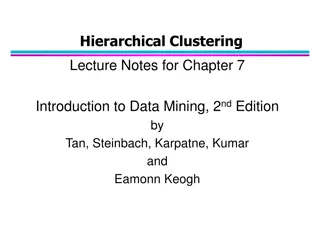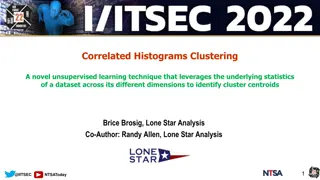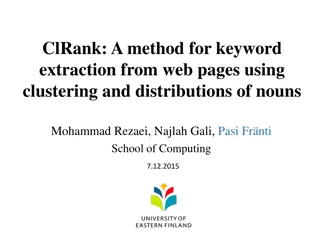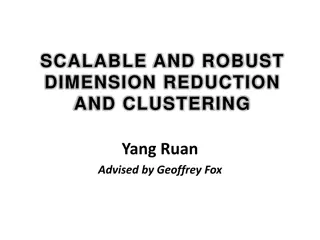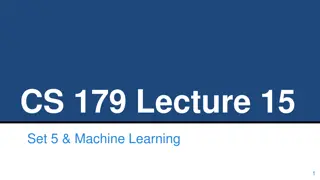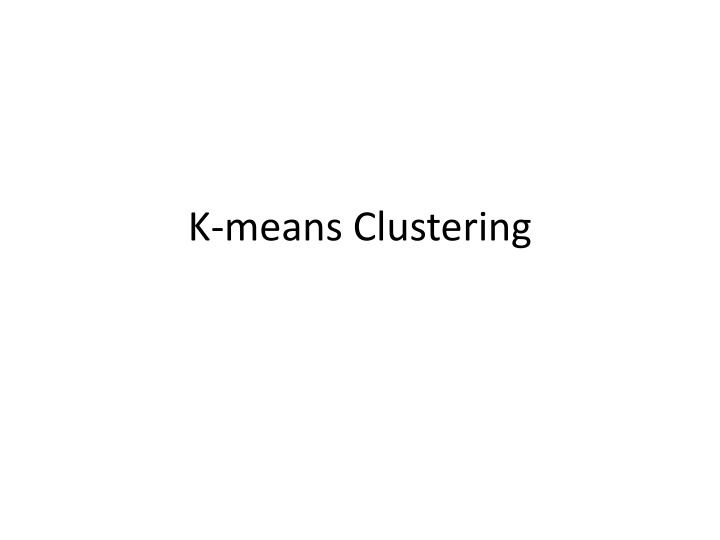
Efficient K-means Clustering Algorithm
Learn about K-means clustering, a popular method for grouping data points, its strengths and weaknesses, the basic algorithm steps involving cluster seed selection, distance calculation, assigning objects, and computing centroids, along with issues like the choice of distance measure. Discover how to iteratively optimize clusters and consider challenges faced by the algorithm.
Download Presentation

Please find below an Image/Link to download the presentation.
The content on the website is provided AS IS for your information and personal use only. It may not be sold, licensed, or shared on other websites without obtaining consent from the author. If you encounter any issues during the download, it is possible that the publisher has removed the file from their server.
You are allowed to download the files provided on this website for personal or commercial use, subject to the condition that they are used lawfully. All files are the property of their respective owners.
The content on the website is provided AS IS for your information and personal use only. It may not be sold, licensed, or shared on other websites without obtaining consent from the author.
E N D
Presentation Transcript
K-means Clustering What is clustering? Why would we want to cluster? How would you determine clusters? How can you do this efficiently?
K-means Clustering Strengths Simple iterative method User provides K Weaknesses Often too simple bad results Difficult to guess the correct K
K-means Clustering Basic Algorithm: Step 0: select K Step 1: randomly select initial cluster seeds Seed 1 650 Seed 2 200
K-means Clustering An initial cluster seed represents the mean value of its cluster. In the preceding figure: Cluster seed 1 = 650 Cluster seed 2 = 200
K-means Clustering Step 2: calculate distance from each object to each cluster seed. What type of distance should we use? Squared Euclidean distance Step 3: Assign each object to the closest cluster
K-means Clustering Seed 1 Seed 2
K-means Clustering Step 4: Compute the new centroid for each cluster Cluster Seed 1 708.9 Cluster Seed 2 214.2
K-means Clustering Iterate: Calculate distance from objects to cluster centroids. Assign objects to closest cluster Recalculate new centroids Stop based on convergence criteria No change in clusters Max iterations
K-means Issues Distance measure is squared Euclidean Scale should be similar in all dimensions Rescale data? Not good for nominal data. Why? Approach tries to minimize the within-cluster sum of squares error (WCSS) Implicit assumption that SSE is similar for each group
WCSS The over all WCSS is given by: ?=1 ? ??? ?? The goal is to find the smallest WCSS Does this depend on the initial seed values? Possibly. ? 2
Bottom Line K-means Easy to use Need to know K May need to scale data Good initial method Local optima No guarantee of optimal solution Repeat with different starting values
K-Means Lab Pause this set of slides and switch to lab slides
Other Clustering in R Hierarchical Clustering (agglomerative) Create a distance matrix using dist() Create the hierarchy using hclust() Model Based Clustering Use mclust() to create the clusters on the basis of Bayesian Information Criterion (BIC) Parameterized Gaussian mixture models
Hierarchical Clustering # Create the distance matrix d <- dist(state_income$V2, method = "euclidean") # Create the hierarchy fit <- hclust(d, method="ward.D2") # Plot the histogram plot(fit) # cut the tree into 6 clusters Groups <- cutree(fit, k=6) # Outline the 6 clusters rect.hclust(fit, k=6, border="red")
Hierarchical Clustering # Other hierarchical methods sfit <- hclust(d, method="single") cfit <- hclust(d, method="complete") afit <- hclust(d, method="average") # Plot the histogram op <- par(mar = c(0, 4, 4, 2), mfrow = c(2, 2)) plot(sfit, labels = FALSE, main = "Single", xlab = "") plot(cfit, labels = FALSE, main = "Complete", xlab = "") plot(afit, labels = FALSE, main = "Average", xlab = "") plot(fit, labels = FALSE, main = "Ward", xlab = "")
Model-Based Clusters This is more complicated that hierarchical or K-means clustering # First load mclust package #Create the cluster(s) fit <- Mclust(state_income$V2) # examine the result(s) summary(fit) # plot the result(s) plot(fit) #Not very satisfying. Try a different data set
Model-Based Clusters # Load in a different data set (iris.data) #Create the cluster(s) fit <- Mclust(iris[,-5]) # examine the result summary(fit) # plot the result(s) plot(fit) # 1: display the model scores vs # clusters # 2: display the classification based on the best scoring model # 3: display the uncertainty (based on the best scoring model) # 4: display the density (based on the best scoring model) (for explanation of mixture models see https://www.ncbi.nlm.nih.gov/pmc/articles/PMC5096736/ )

